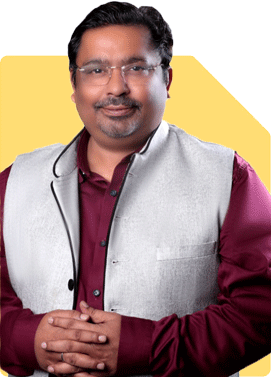Hello Sir, Hello Sir. I am 35 years old and earn 1.5 lakh per month in hand. I have an own apartment which is 10 yrs old. My current investments are EPF+VPF 28,410 per month (accumulated 11,00,000 so far); PPF accumulated 7,20,000 so far and plan to invest 1,50,000 annually and 15 yrs. maturity will end in 2031; started NPS last year and invest 6,000 in Tier 1 and 1,000 in Tier 2 monthly (currently accumulated 89,000). I opened HDFC Life Insurance ULIP Plan last year with premium payment of 2,15,000 annually for 5 yrs with the policy effective until I turn 60 yrs. I have health insurance of 5,00,000 annual from my company. I want to accumulate 2 crore and retire by 45 yrs. Could you please advise on how I should approach and plan the same.
Ans: It's wonderful that you’re thinking about your future and planning for early retirement. At 35, you’ve got a strong foundation, but there are some areas where you can refine your strategy to meet your goal of accumulating Rs 2 crore by the age of 45.
Let's break this down step by step, considering all aspects of your current financial situation.
Current Investments and Their Assessment
You have several ongoing investments which are commendable. Here's a detailed look at each one and some suggestions:
1. EPF and VPF
You’re contributing Rs 28,410 per month to your EPF and VPF. This is a solid investment, providing you with a stable, long-term return and tax benefits. Keep this going as it forms a good base for your retirement corpus.
2. PPF
Your PPF account, with an accumulated amount of Rs 7,20,000 and an annual investment of Rs 1,50,000, is a secure investment offering decent returns. It’s also tax-free, which is a great advantage. Continue with your current strategy until maturity in 2031.
3. NPS
The National Pension System is another excellent investment for retirement. You are investing Rs 6,000 in Tier 1 and Rs 1,000 in Tier 2 monthly. Considering the long-term nature and tax benefits of NPS, this is a good choice. You might consider increasing your contributions here over time to boost your retirement corpus.
4. ULIP Plan
Your HDFC Life Insurance ULIP with an annual premium of Rs 2,15,000 is a significant investment. ULIPs generally have higher charges and might not be the most efficient way to invest for growth. It’s advisable to evaluate this policy. If the returns are not meeting your expectations, consider surrendering it and reinvesting in more efficient investment avenues such as mutual funds.
5. Health Insurance
You have a Rs 5,00,000 health insurance cover from your company, which is good. However, it’s prudent to have a personal health insurance policy independent of your employer, ensuring continuous coverage regardless of job changes.
Evaluating Investment Options
Let’s discuss potential improvements and additional investment avenues to meet your Rs 2 crore target by 45.
1. Equity Mutual Funds
Actively managed equity mutual funds are excellent for long-term growth. They have the potential to offer higher returns compared to other investment options. Unlike index funds, actively managed funds benefit from professional management, aiming to outperform market indices.
Consider systematic investment plans (SIPs) in well-performing mutual funds. This can help you leverage the power of compounding and market volatility.
2. Increasing NPS Contributions
Given the tax benefits and long-term growth potential, consider gradually increasing your NPS contributions. This will enhance your retirement corpus significantly.
3. Regular Mutual Funds through a Certified Financial Planner
Investing in regular mutual funds through a certified financial planner (CFP) has distinct advantages. CFPs provide tailored advice, help with fund selection, and offer ongoing support to optimize your investment strategy. Regular mutual funds come with an advisor fee, but the professional guidance often results in better returns and less hassle.
4. Emergency Fund
It’s crucial to have an emergency fund equivalent to 6-12 months of your monthly expenses. This ensures you have liquidity for unforeseen expenses without disrupting your long-term investments.
5. Additional Health Insurance
Securing a personal health insurance policy with adequate coverage is essential. This ensures continuous protection regardless of changes in employment.
Detailed Action Plan
1. Review and Optimize Current Investments
Assess your ULIP’s performance. If returns are unsatisfactory, consider surrendering and reinvesting in mutual funds.
Maintain your EPF and PPF contributions as they are beneficial long-term investments.
2. Enhance Equity Exposure
Start SIPs in actively managed equity mutual funds. Aim to allocate a significant portion of your savings here for better growth potential.
Increase your NPS contributions progressively. Focus more on the Tier 1 account due to its tax benefits and long-term growth.
3. Financial Safety Net
Create an emergency fund covering 6-12 months of expenses. This provides financial security against unexpected events.
Secure a personal health insurance policy to supplement your company-provided coverage. Ensure it covers a wide range of medical conditions and treatments.
4. Monitoring and Adjustments
Regularly review your investment portfolio. Ensure it aligns with your retirement goals and risk appetite.
Consult with a certified financial planner regularly. They can provide personalized advice, helping you navigate market changes and optimize your investments.
Disadvantages of Direct Funds
Direct funds might seem attractive due to lower expense ratios, but they require active management and financial expertise. Without professional guidance, you might miss out on optimal fund selection and portfolio adjustments.
Benefits of Regular Funds through CFP
Expert Guidance: CFPs offer expert advice tailored to your financial goals and risk tolerance.
Ongoing Support: They provide continuous monitoring and adjustments, ensuring your investments stay on track.
Better Returns: Professional management often leads to better returns compared to self-managed direct funds.
Final Insights
Reaching your goal of Rs 2 crore by 45 is achievable with disciplined savings and strategic investments. Focus on high-growth avenues like actively managed equity mutual funds, increase your NPS contributions, and ensure you have a robust financial safety net.
Regularly consult with a certified financial planner to optimize your investments and stay aligned with your goals. Their expertise will help you navigate financial complexities and enhance your portfolio’s performance.
Stay disciplined and proactive in your financial planning. With the right strategy, you’ll achieve your early retirement goal and secure a comfortable future.
Best Regards,
K. Ramalingam, MBA, CFP,
Chief Financial Planner,
www.holisticinvestment.in


























